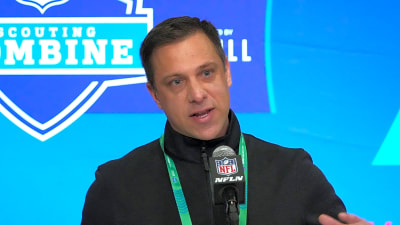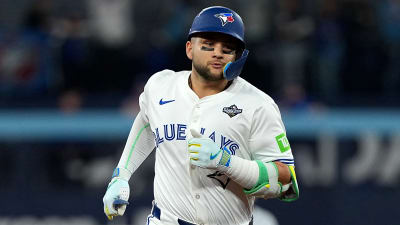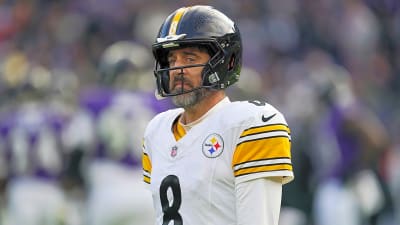- Home
- Quizzes
- My Quiz Activity
- Newsletters
- MY FAVORITES
- Add Sports/Teams
- SPORTS
-
NFL
- NFL Home
- Arizona Cardinals
- Atlanta Falcons
- Baltimore Ravens
- Buffalo Bills
- Carolina Panthers
- Chicago Bears
- Cincinnati Bengals
- Cleveland Browns
- Dallas Cowboys
- Denver Broncos
- Detroit Lions
- Green Bay Packers
- Houston Texans
- Indianapolis Colts
- Jacksonville Jaguars
- Kansas City Chiefs
- Las Vegas Raiders
- Los Angeles Chargers
- Los Angeles Rams
- Miami Dolphins
- Minnesota Vikings
- New England Patriots
- New Orleans Saints
- New York Jets
- New York Giants
- Philadelphia Eagles
- Pittsburgh Steelers
- San Francisco 49ers
- Seattle Seahawks
- Tampa Bay Buccaneers
- Tennessee Titans
- Washington Commanders
-
MLB
- MLB Home
- Athletics
- Arizona Diamondbacks
- Atlanta Braves
- Baltimore Orioles
- Boston Red Sox
- Chicago White Sox
- Chicago Cubs
- Cincinnati Reds
- Cleveland Guardians
- Colorado Rockies
- Detroit Tigers
- Houston Astros
- Kansas City Royals
- Los Angeles Angels
- Los Angeles Dodgers
- Miami Marlins
- Milwaukee Brewers
- Minnesota Twins
- New York Yankees
- New York Mets
- Philadelphia Phillies
- Pittsburgh Pirates
- San Diego Padres
- San Francisco Giants
- Seattle Mariners
- St. Louis Cardinals
- Tampa Bay Rays
- Texas Rangers
- Toronto Blue Jays
- Washington Nationals
-
NBA
- NBA Home
- Atlanta Hawks
- Boston Celtics
- Brooklyn Nets
- Charlotte Hornets
- Chicago Bulls
- Cleveland Cavaliers
- Dallas Mavericks
- Denver Nuggets
- Detroit Pistons
- Golden State Warriors
- Houston Rockets
- Indiana Pacers
- Los Angeles Clippers
- Los Angeles Lakers
- Memphis Grizzlies
- Miami Heat
- Milwaukee Bucks
- Minnesota Timberwolves
- New Orleans Pelicans
- New York Knicks
- Oklahoma City Thunder
- Orlando Magic
- Philadelphia 76ers
- Phoenix Suns
- Portland Trail Blazers
- Sacramento Kings
- San Antonio Spurs
- Toronto Raptors
- Utah Jazz
- Washington Wizards
-
NHL
- NHL Home
- Anaheim Ducks
- Boston Bruins
- Buffalo Sabres
- Calgary Flames
- Carolina Hurricanes
- Chicago Blackhawks
- Colorado Avalanche
- Columbus Blue Jackets
- Dallas Stars
- Detroit Red Wings
- Edmonton Oilers
- Florida Panthers
- Los Angeles Kings
- Minnesota Wild
- Montreal Canadiens
- Nashville Predators
- New Jersey Devils
- New York Islanders
- New York Rangers
- Ottawa Senators
- Philadelphia Flyers
- Pittsburgh Penguins
- San Jose Sharks
- Seattle Kraken
- St. Louis Blues
- Tampa Bay Lightning
- Toronto Maple Leafs
- Utah Mammoth
- Vancouver Canucks
- Vegas Golden Knights
- Washington Capitals
- Winnipeg Jets
- NCAAF
- NCAAM
- Olympics
- Boxing
- Entertainment
- Lifestyle
- Golf
- MMA
- Soccer
- Tennis
- Wrestling
- Sports Betting
- More Sports
- RESOURCES
- My Account
- YB on Facebook
- YB on Twitter
- YB on Flipboard
- Contact Us
- Privacy Policy
- Terms of Service
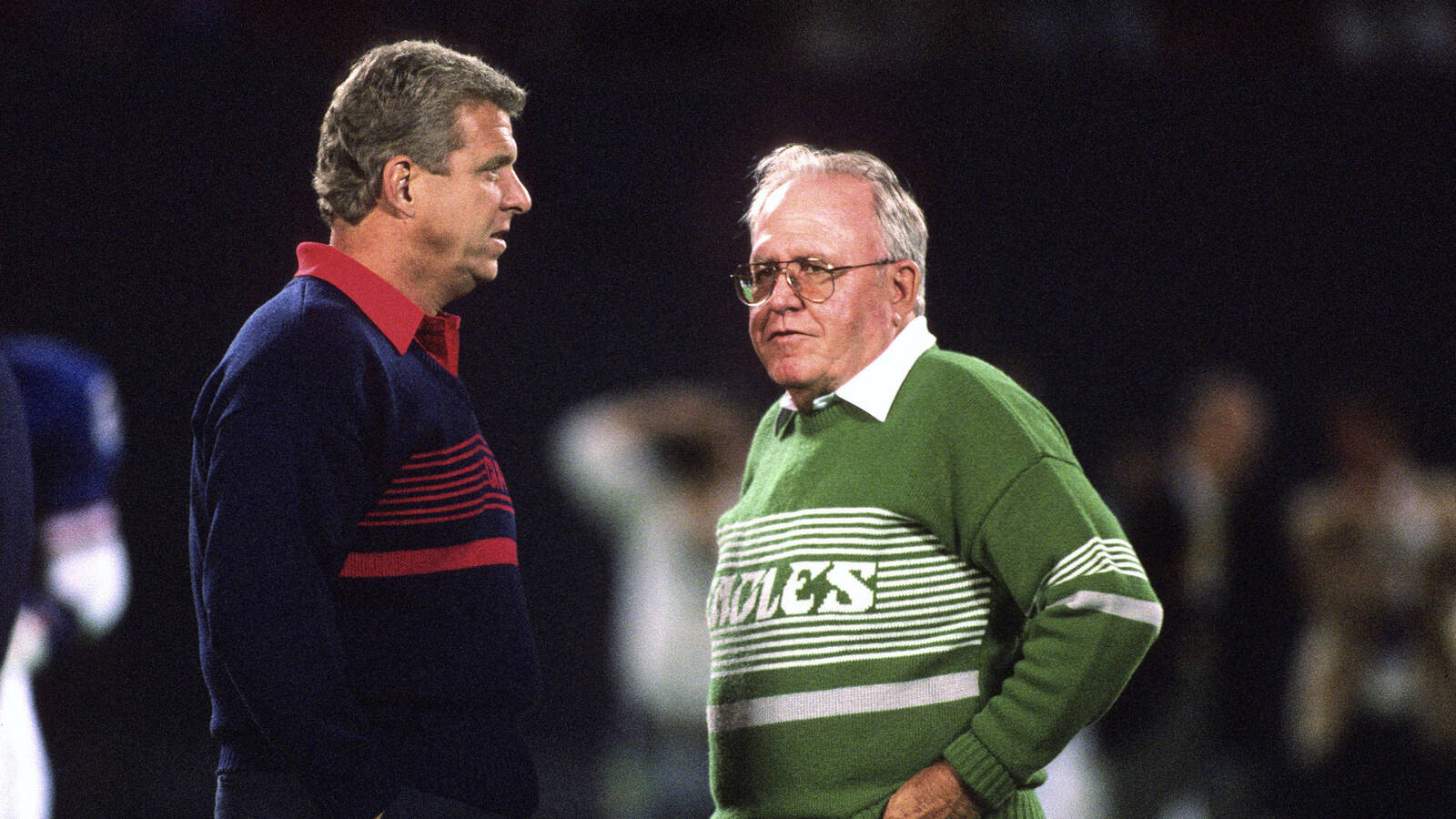
The best divisions in NFL history
Since the AFL and NFL joined forces, numerous divisions have brought season-long intrigue. Judged on quality and depth, here are the best divisions in that time.
2002 NFC South

Although the Buccaneers' defensive playoff dominance overshadows the rest of this group's work, the Falcons unleashed Michael Vick on the NFL in 2002. New Orleans went 9-7, beating a slew of playoff teams to get there. Aaron Brooks' Saints did not make the playoffs but started 6-1 after toppling the Bucs (via unusual OT walk-off), Packers, Steelers and 49ers. The Falcons (9-6-1), who had maybe the best athlete ever to play quarterback, swept their top rivals and became the first visitor to win a playoff game at Lambeau Field. The Panthers were 7-9 in John Fox's debut. Jon Gruden's Tampa debut produced a 12-4 record and a Super Bowl parade.
1999 AFC East
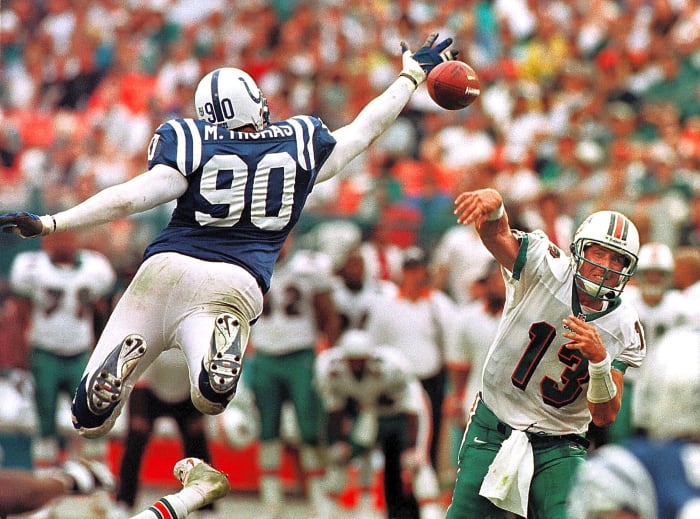
One of only two instances of a five-team division not producing one losing record, the 1999 AFC East saw Peyton Manning's rapid rise reshape the division's complexion. This came during Dan Marino's final season and as the Bills' batch of Super Bowl bastions mounted a last stand. Indianapolis, Buffalo and Miami reached the playoffs, while the Jets and Patriots finished 8-8. Vinny Testaverde's Week 1 Achilles tear gutted the Jets, effectively ending the Bill Parcells- Bill Belichick era. The Colts completed a historic turnaround, going 13-3 after a 3-13 season, while the Dolphins joined them in the divisional round. The Bills' bizarre decision to bench Doug Flutie for the playoffs led to the Music City Miracle loss.
2007 AFC South
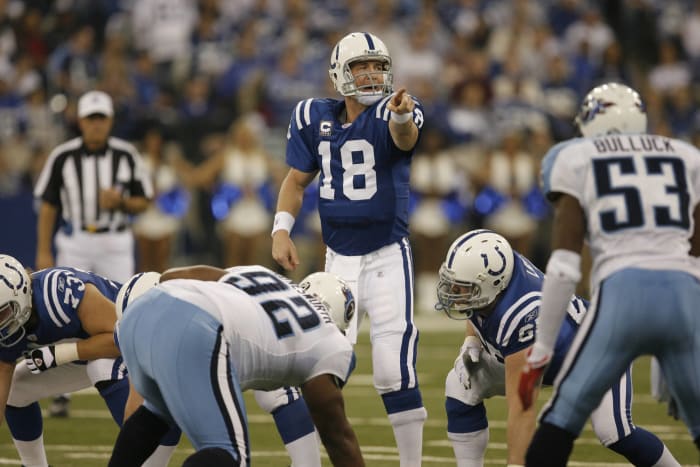
A forgotten great team, the 2007 Colts supported Peyton Manning with the top-ranked scoring defense. They tested the unbeaten Patriots and were a rested Manning Week 17 half from 14-2. Behind an efficient David Garrard and the Fred Taylor and Maurice Jones-Drew backfield tandem's 14 combined TDs, the Jaguars went 11-5. Though neither they nor the 10-6 Titans — in Vince Young's lone playoff cameo — beat the Colts with Manning, both deployed top-10 defenses. The Jags upset the Steelers in the wild-card round. Two dropped passes turned-Manning INTs in a Chargers Round 2 upset deprived the NFL of the best possible Manning-Tom Brady duel.
2013 AFC West

Peyton Manning's Denver apex happened during Andy Reid's Kansas City debut and a Philip Rivers bounce-back season. Some highly skilled principals participated in this division. After the Broncos swept the Chiefs in their midseason meetings, Manning's 55-touchdown pass season did not feature an AFC West race. But the Chiefs went 11-5; the Bolts 9-7. Reid turned a 2-14 team into a playoff entrant, and Rivers vexed the Bengals in the first round of the playoffs before giving a defensively depleted Broncos team a Round 2 scare. Denver's Super Bowl march and the Chargers' and Chiefs' resurgences compensate for the 4-12 Raiders.
2008 NFC South
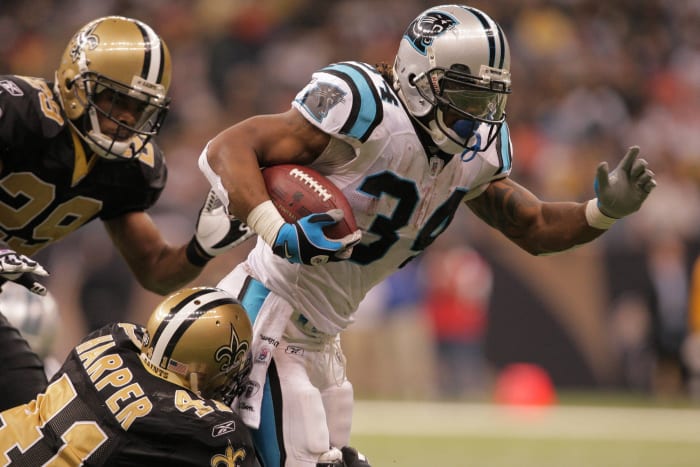
Although this division carried an 0-2 playoff record, none of its teams finished below .500 and each squad outscored opponents by at least 35 points. Prior to Jake Delhomme's divisional-round implosion, the DeAngelo Williams-Jonathan Stewart attack powered the Panthers (12-4) to the NFC's No. 2 seed. Rookie Matt Ryan resurrected a Falcons team previously reeling from the Michael Vick scandal and Bobby Petrino's exit. Drew Brees also posted the first of his five 5,000-yard seasons for an 8-8 Saints team. Jon Gruden's Bucs started 9-3, beating the Panthers and Falcons, but lost their final four en route to Gruden's firing.
2016 NFC East

This is one of the most balanced divisions in NFL history. The Cowboys, with the beginning of the Dak Prescott-Ezekiel Elliott era, may have gone 14-2 had they not rested players in Week 17. Buoyed by defensive additions Olivier Vernon, Snacks Harrison and Janoris Jenkins, the 11-5 Giants swept the Cowboys and ranked second in scoring defense. Kirk Cousins' Washington squad blew a Week 17 win-and-in opportunity but still went 8-7-1. The kicker here: the 7-9 Eagles. The core of the 2017 Super Bowl champion squad rated as the No. 4 DVOA team. Dallas earned home-field advantage but lost to Green Bay in a divisional-round classic.
2020 AFC North

Kevin Stefanski's arrival reignited this division, as Baker Mayfield went from INT machine to playoff QB. The Browns voyaged to the playoffs for the first time in 18 years; they finished third in their own division. The Steelers rebounded, after a Ben Roethlisberger elbow injury derailed their 2019 season, to finish 12-4. This came after an 11-0 start, however. The Ravens went 11-5 and posted the best point differential (plus-165) in the division. Cleveland and Baltimore dueled in the season's best game, a Monday-night thriller the Ravens won, but the Browns toppled the Steelers — despite Stefanski out with COVID-19 — before putting a scare into the Chiefs in Round 2.
1981 NFC East
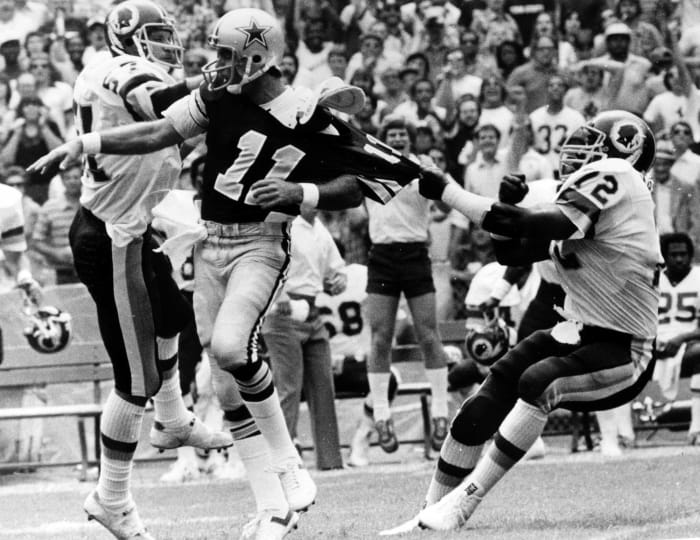
The defending NFC champion Eagles tangled with a still-elite Cowboys outfit in a division that also housed a Washington nucleus that won the 1982 title. And Lawrence Taylor entered the equation this season. The St. Louis Cardinals also went 7-9 and split with the Cowboys. Dallas (12-4) still won the division and was likely denied another Super Bowl title via "The Catch." The Eagles carried the No. 1 defense for a second straight year and started 6-0, but Bill Parcells' Giants (9-7) ended that period's Eagles run in the wild-card game. Taylor earned Defensive Player of the Year honors, providing a prelude to his '80s reign.
2004 AFC East

The 2000s leg of the Patriots dynasty featured better competition than the 2010s portion. The Jets came within two Doug Brien missed field goals of upsetting the Steelers in Round 2. Herm Edwards' bunch still started 5-0 and saw 31-year-old Curtis Martin lead the league with 1,697 rushing yards. The 10-6 team split with the Bills, a 9-7 outfit that carried one of the era's best defensive DVOA figures. Neither measured up to the best Super Bowl-winning Pats team, which finished off a then-record with 18 straight regular-season wins. The defense-powered squad went 14-2 and won both AFC playoff games by double digits.
1976 NFC East
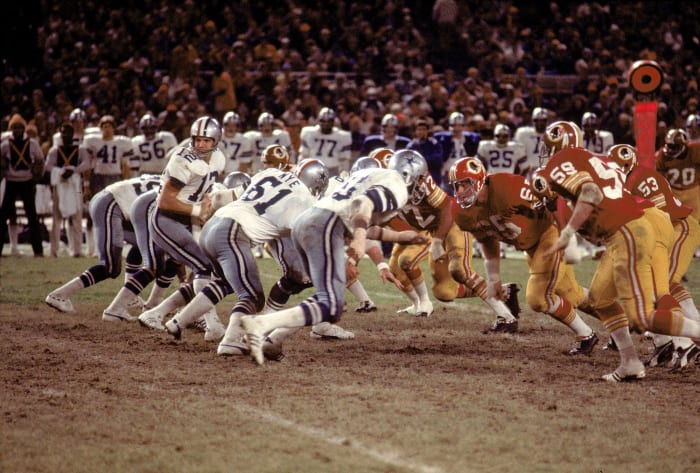
After failing to win the division for two seasons, the Cowboys went 11-3 to claim the 1976 NFC East prize. They swept neither 10-4 Washington nor 10-4 St. Louis, however. George Allen's final playoff team had yet to turn the reins over to Joe Theismann, starting 37-year-old Billy Kilmer for nine games. It edged the Cards for the NFC's wild-card spot but lost by three scores to the NFC champion Vikings. Riding eventual 15-year QB starter Jim Hart, the two-time reigning division champ Cards beat the playoff-bound Rams and Colts. This was not one of Dallas' memorable teams; it scored 12 points in a Round 1 loss to the Rams.
2014 AFC North
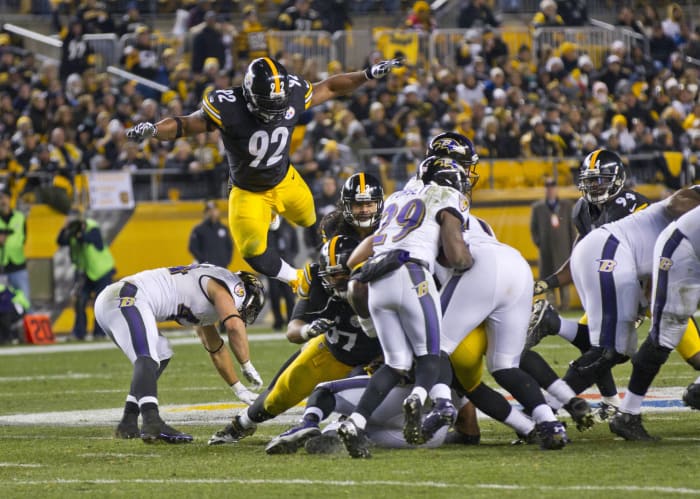
Cleveland's rare competence, with hometown QB Brian Hoyer, made this division elite. The Browns went 7-9 in a division with three playoff teams. This season marked the breakout of the Steelers' Killer B's, with both Antonio Brown and a slimmed-down Le'Veon Bell becoming All-Pros. Pittsburgh got 16 games from Ben Roethlisberger and went 11-5. Neither the Steelers nor the 10-5-1 Bengals — who lost their fourth straight wild-card game — exited Round 1. The Ravens rode Gary Kubiak's offense (and Joe Flacco's final good season in Baltimore) to 10-6 and a first-round win in Pittsburgh. Some unusual Patriot plays bedeviled them a week later.
1979 AFC Central

After losing in the 1978 AFC championship game, the Oilers notched a home win over the defending Super Bowl champs in '79. The Steel Curtain's final rival, Bum Phillips' team threw Hall of Famer Earl Campbell at defenses, went 11-5 in 1979 and secured an AFC title rematch. The Browns took a game from the Oilers and went 9-7, with the future Kardiac Kids starting 4-0 and beating four playoff teams that season. Though aging at this point, Pittsburgh (12-4) had its passing game in high gear. Even if they caught an officiating break against the Oilers in the 1979 title game, the Steelers won each playoff game by double digits.
1984 AFC West
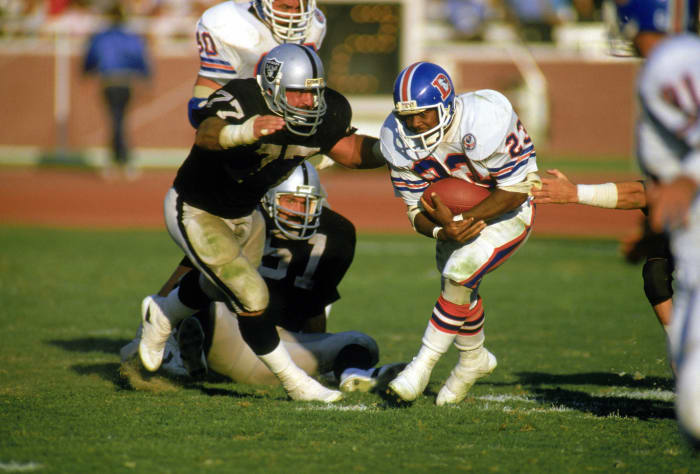
This division fits into the list's "balance>dominance" sector. None of the three playoff teams reached the AFC title game, but the Broncos, Seahawks and Raiders combined to go 36-12. A sign of things to come, John Elway's first full season as a starter ended with Denver 13-3. Behind running back Sammy Winder's best season (an 1,153-yard Pro Bowl effort), the Broncos swept the Raiders and won nine straight. The defending Super Bowl champions' Marc Wilson experiment never took off, squandering a quality Mike Haynes- and Howie Long-led defense. Seattle's 12 wins were its most until 2005; Dave Krieg's 32 TD passes compensated for an injured Curt Warner. The Seahawks beat the Raiders in Round 1.
2000 AFC Central

This division housed probably the two best teams in 2000, and the Ravens-Titans divisional-round slugfest illustrated it. Fueled by dominant defenses , the Titans, Ravens and Steelers each ranked top four in DVOA. Each benefited from playing the Bengals and recently reborn Browns in the AFC Central's brief six-team era, but the 9-7 Steelers were the final team to beat an iconic Ravens squad. Baltimore went five games without scoring a touchdown, but its switch to Trent Dilfer helped the offense support a record-setting defense. The Titans (13-3 for a second straight year) were the only team to score an offensive TD against the Ravens in the playoffs.
1993 AFC West
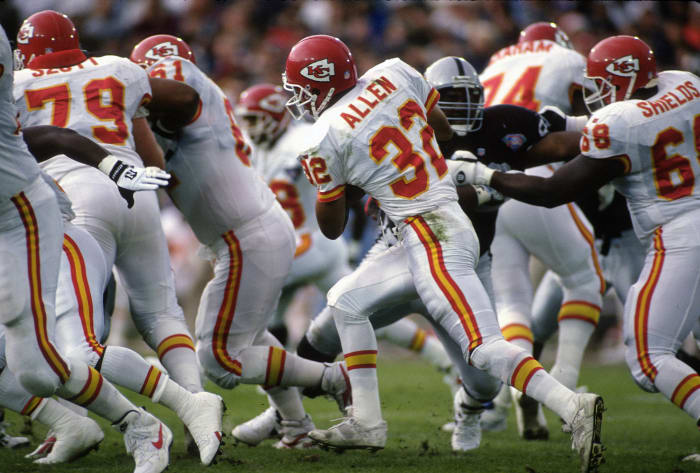
The football gods placed Joe Montana and John Elway in the same division for two years. Acquired that offseason , Montana sparked the Chiefs to their first division title in 22 years. Fellow splashy addition Marcus Allen scored 15 TDs for the 11-5 Chiefs, who swept the Raiders and split with the Broncos. Despite Elway having little aerial help beyond All-Pro Shannon Sharpe, Denver (9-7) paced the division in scoring. The Jeff Hostetler-led Raiders (10-6) beat the Broncos in Week 17 and in the wild-card game; Montana authored comeback January wins over the Steelers and Oilers. A year before their Super Bowl run, the Chargers went 8-8 with a plus point differential.
1992 NFC East

One of the best eras a division's ever had included the Cowboys' rise. From 1989-92, Dallas went from one to seven to 11 to 13 wins. Recently tabbed the sixth-greatest team ever, the '92 Dallas edition did lose to both the playoff-bound Philly (11-5) and Washington (9-7) squads. Randall Cunningham's final good Eagles season doubled as Reggie White's Philly finale and Herschel Walker's only non-Cowboys 1,000-yard year. Clyde Simmons led the NFL with 19 sacks. Both Philly and Washington, in Joe Gibbs 1.0's final season, joined the Cowboys in Round 2. Emmitt Smith totaled 2,470 scrimmage yards in the Cowboys' 19 games; only the 49ers challenged them in the playoffs.
1994 NFC Central

While that NFC East contingent saw the Giants and Cardinals combine for 10 wins, this division was one of the deepest ever. The NFC's 1994 playoffs featured the 49ers, Cowboys and four Central teams, with the Vikings (10-6), Packers, Lions and Bears (each 9-7) becoming the first divisional quartet to qualify. Even the Bucs went 6-10. Barry Sanders led the NFL with 1,883 rushing yards but finished with minus-1 yard against the Packers in the playoffs. The Vikings beat the Bears on a Cris Carter OT walk-off, but Warren Moon's team lost the Metrodome rematch in Steve Walsh's most notable NFL game. The wild-card winners' Round 2 games: less good.
1991 NFC West

The Joe Montana-less season produced an interesting result. The Saints, Falcons and 49ers vied for the division title, and the Steve Young-Steve Bono-quarterbacked team missed the playoffs despite a plus-154 point differential. While that 49ers iteration (10-6) has a claim to the best regular-season-only team in the post-merger era, the Falcons (10-6) made the playoffs by beating the 49ers on a midseason Hail Mary. Jerry Glanville's memorably fun team — featuring Deion Sanders' breakout third season — beat the Saints (11-5) in a wild-card game. The linebacker-led Saints started 7-0 and won their first division crown.
1998 AFC East
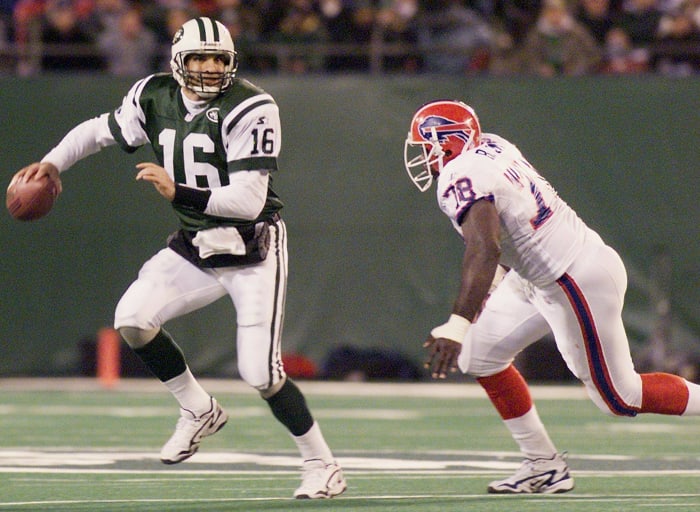
This division produced four playoff teams, featuring the Jets' first AFC title game cameo since 1982 and Doug Flutie's NFL reentrance. After a failed 1997 with Todd Collins, Buffalo turned to the CFL legend midway through '98 and is one of six 0-3 teams to rally to the playoffs. In Dan Marino's penultimate season, the Dolphins also went 10-6 but beat the Bills in Round 1 after Trace Armstrong stripped Flutie near Miami's goal line. Drew Bledsoe's final Pats playoff team went 9-7. The Bill Parcells-Bill Belichick Jets (12-4) lost only one divisional game (to the 3-13 Colts) and oversaw Vinny Testaverde's 29-touchdown pass season.
1985 AFC East

1985's most memorable game remains the Dolphins wrecking the Bears' perfect season, but that year delivered three 11-plus-win AFC East teams — one of which ruined Dan Marino's chance at a second straight Super Bowl appearance. Ken O'Brien and the New York Sack Exchange's remaining members powered the Jets to 11-5, but the Patriots (11-5) beat them and the Dolphins handily in the playoffs. The Pats had never beaten the Dolphins in the Orange Bowl but forced six turnovers to do it in the AFC title game. Marino's second All-Pro season featured a 12-4 record, but lower-regarded 1983 draftee Tony Eason faced the Bears instead. It did not go well.
2007 NFC East
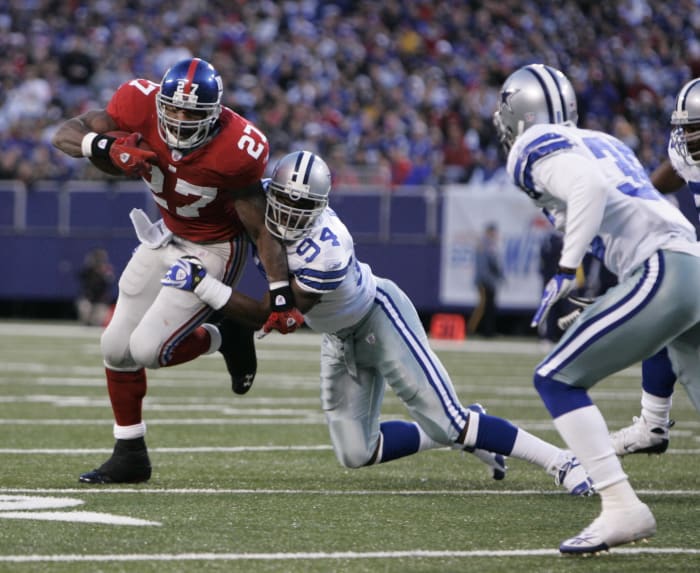
Each team finished with a positive point differential and none had losing records. Tony Romo's first full season as Dallas' starter, working with a still-elite Terrell Owens, led to a 13-3 record and the NFC's No. 1 seed. Washington went 9-7, resulting in Joe Gibbs' 10th and final playoff berth. The team notched a December win over the Giants (10-6), whose No. 16 DVOA figure represents one of the metric's misses. Eli Manning's emergence and some potent D-line chess pieces powered Big Blue to one of the NFL's defining playoff runs. The second of those wins, a back-and-forth game in Texas, ended the Cowboys' season.
2021 NFC West

Elevating the Sean McVay-Kyle Shanahan rivalry up a level, the 2021 season brought three Rams-49ers meetings. Before that NFC championship game, the teams navigated a division that produced three 10-win teams while also featuring Russell Wilson's 7-10 Seahawks finale. The Rams' first Matthew Stafford squad won, at 12-5, but lost both regular-season games to the resurgent 49ers (10-7). This included a Week 18 overtime win that powered San Francisco into the playoffs. The Cardinals started 8-1 en route to an 11-6 season, one including key injuries, snapping a playoff drought. None of the teams boasted plus-100 point differentials, but two had a major say in Super Bowl LVI's outcome.
1991 NFC East

Washington's modern-era crowning achievement went through an up-and-coming Cowboys team and one of the best single-season defenses ever. The Eagles lost Randall Cunningham in Week 1 but saw defensive linemen Reggie White, Clyde Simmons and Jerome Brown become first-team All-Pros for a 10-6 team. That wasn't good enough for the playoffs, but Dallas' 11-5 season — which included the Triplets' collective breakout — was. The Cowboys beat the 14-2 Redskins, but Washington's No. 1-ranked offense and No. 2-ranked defense produced 12 double-digit wins and towered over the league. The defending Super Bowl champion Giants' 8-8 mark represented divisional depth at the least.
1975 AFC Central
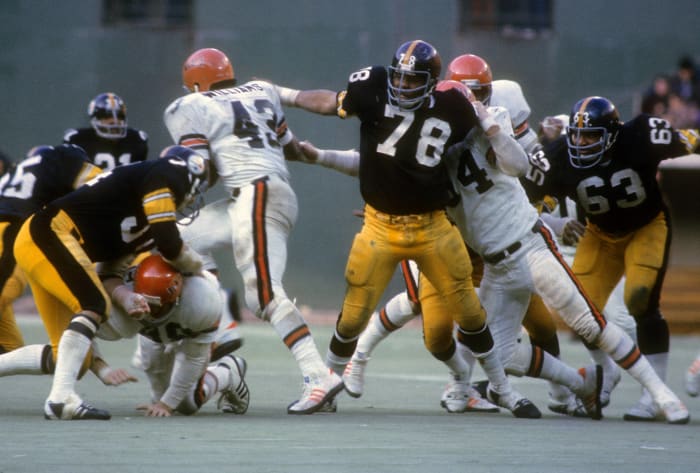
A clear hierarchy existed in this division, with the all-everything Steelers beating the 11-3 Bengals twice. Cincinnati beat 10-4 Houston twice. But the Oilers shook off a rough early 1970s and would go on to become a Steelers rival in a few years. Paul Brown's Bengals were top 10 on offense and defense. Targeting Isaac Curtis and Hall of Famer Charlie Joiner, Ken Anderson made his first Pro Bowl. The 3-11 Browns took a game off the Bengals. The Steelers outscored their opposition by 211 points, with the pre-free agency power sporting its all-time defense and seeing seeds of its future passing arsenal sprout in 1975.
1990 NFC East

To earn the NFC's No. 2 seed, the eventual Super Bowl champion Giants had to navigate a formidable division. Randall Cunningham nearly amassed 1,000 rushing yards (in addition to 30 TD passes), and the Eagles stopped the Giants from improving to 10-0. Both Philadelphia and Washington, the latter dominating the NFL in 1991, went 10-6 and rank top five in 1990 DVOA. The rising Cowboys went 7-9. Mark Rypien's team beat Cunningham's in Round 1, ending Buddy Ryan's run as Eagles coach . New York (13-3) soon ended Joe Montana's Bay Area QB1 run, stopping the best Super Bowl-era threepeat attempt, and won Super Bowl XXV without starter Phil Simms.
1989 NFC West

Obscured by arguably the greatest team ever: the Rams' sublime wild-card work. Both the Rams (11-5) and Saints (9-7) outscored opponents by more than 80 points, with Henry Ellard and Flipper Anderson helping Los Angeles to a Week 4 win over the 49ers superpower and that season's No. 3 DVOA ranking. The Saints missed the playoffs, but that nucleus made four brackets between 1987-92. The 49ers' first post-Bill Walsh team went 14-2, losing by a combined five points. Joe Montana's time-capsule season ended with San Francisco outscoring playoff opposition 126-26. The Rams-49ers' NFC title game meeting is one of three times the NFC West put two teams in that round.
1997 NFC Central
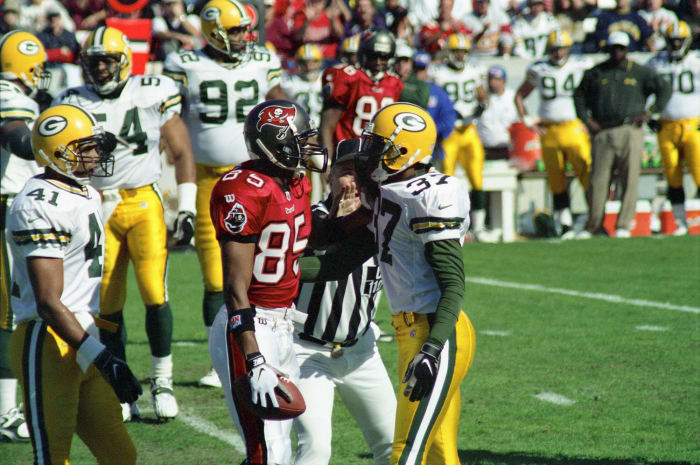
Like 1994, the NFC Central produced four playoff teams. This group had a higher ceiling. Tony Dungy guided the Buccaneers to their first playoff berth in 15 years. All-Pro linebacker Hardy Nickerson joined future Super Bowl-season cornerstones Derrick Brooks and Warren Sapp, leading Tampa Bay to a 10-6 season that included a first-round win over the 9-7 Lions — a forgettable team beyond Barry Sanders' 2,053-yard tour de force. Sanders and Brett Favre shared the MVP. Randall Cunningham resurfaced in Minnesota, leading a wild-card comeback over the Giants to cap a 9-7 season and set up 1998's ignition. The defending Super Bowl champion Packers went 13-3 and were never tested in the NFC playoffs.
2024 NFC North

The Vikings' Sam Darnold signing turned out to be historically significant, as Minnesota zoomed to 14-3. This overlapped with the Lions' ascent. An injury-battered Detroit edition still motored to 15-2, producing — stakes-wise — the biggest game in regular-season history. The Week 18 winner-take-all game sent the Lions to the No. 1 seed and the Vikings to the 5 line, but the Packers also made the playoffs at 11-6. All three teams carried at least plus-100 differentials into the postseason, as Jordan Love displayed growth in his second starter year. The Bears' response to a Week 7 Hail Mary may be all that keeps this division out of the No. 1 spot.
2013 NFC West

The 2013 NFC West's two best teams met in the conference championship game; its third-place finisher won 10 games; its last-place team carried a high floor. The arrivals of Bruce Arians and Carson Palmer reignited the Cardinals, who went 10-6 and ranked 10th in DVOA. Jeff Fisher's Rams (7-9) beat the Cards and knocked off the playoff-bound Saints and Colts, but this division's coronation occurred when the 49ers (12-4) won two playoff road games and voyaged to Seattle for a "Mega-Powers explode"-esque main event. The Seahawks took the next step on their ascent, going 13-3 to earn the No. 1 seed and holding off the previous NFC kingpins in an era-defining showdown/de facto Super Bowl.
Sam Robinson is a sportswriter from Kansas City, Missouri. He primarily covers the NFL for Yardbarker. Moving from wildly injury-prone sprinter in the aughts to reporter in the 2010s, Sam set up camp in three time zones covering everything from high school water polo to Division II national championship games
More must-reads:
- The 25 best NFL teams from the 2010s
- How 17-game NFL season could benefit players, owners
- The 'Oldest 4,000-passing-yard seasons' quiz
Breaking News
Trending News
Customize Your Newsletter
 +
+
Get the latest news and rumors, customized to your favorite sports and teams. Emailed daily. Always free!
PRIVACY POLICY EDITORIAL POLICY CONTACT US
ABOUT YARDBARKER TERMS OF SERVICE
Use of this website (including any and all parts and
components) constitutes your acceptance of these
Terms of Service and Privacy Policy.
This site is for entertainment purposes only.
There is no gambling offered on this site.
Gambling Problem? Call 1-800-Gambler.
